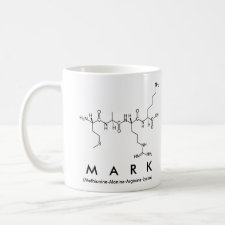
Authors: Venkatesh S, Saha J, Pass S, Byrne ME
Article Title: Transport and structural analysis of molecular imprinted hydrogels for controlled drug delivery.
Publication date: 2008
Journal: European Journal of Pharmaceutics and Biopharmaceutics
Volume: 69
Issue: (3)
Page numbers: 852-860.
DOI: 10.1016/j.ejpb.2008.01.036
Alternative URL: http://www.sciencedirect.com/science/article/B6T6C-4RV7YB7-1/2/6393c6043700cc312570949732fd7ddd
Abstract: Molecular imprinting provides a rational design strategy for the development of controlled release drug delivery systems. We demonstrate that imprinting a hydrogel network results in macromolecular memory for the template molecule, indicated by the two or more times greater partitioning into these networks as compared to non-imprinted networks. Partitioning of drug into networks synthesized from multiple functional monomers was 8 times greater than networks synthesized from single monomers. One-dimensional permeation studies showed that the gel with maximum incorporated chemical functionality had the lowest diffusion coefficient, which was one to two orders of magnitude lower than all other gels studied. All imprinted networks had significantly lower diffusion coefficients than non-imprinted networks, in spite of comparable mesh sizes and equilibrium polymer volume fractions in the swollen state, which to our knowledge, is the first time that such a study has been conducted in the literature. We propose the "tumbling hypothesis", wherein a molecule tumbling through an imprinted network with multiple, organized functionalities and an appropriate mesh size, experiences heightened interactions with memory sites and shows delayed transport kinetics. Thus, the structural plasticity of polymer chains, i.e. the organization of functional groups into memory sites, may be responsible for enhanced loading and extended release
Template and target information: ketotifen fumarate
Author keywords: drug delivery, controlled release, sustained release, molecular imprinting, Structural plasticity, Macromolecular memory



Join the Society for Molecular Imprinting

New items RSS feed
Sign-up for e-mail updates:
Choose between receiving an occasional newsletter or more frequent e-mail alerts.
Click here to go to the sign-up page.
Is your name elemental or peptidic? Enter your name and find out by clicking either of the buttons below!
Other products you may like:
 MIPdatabase
MIPdatabase









